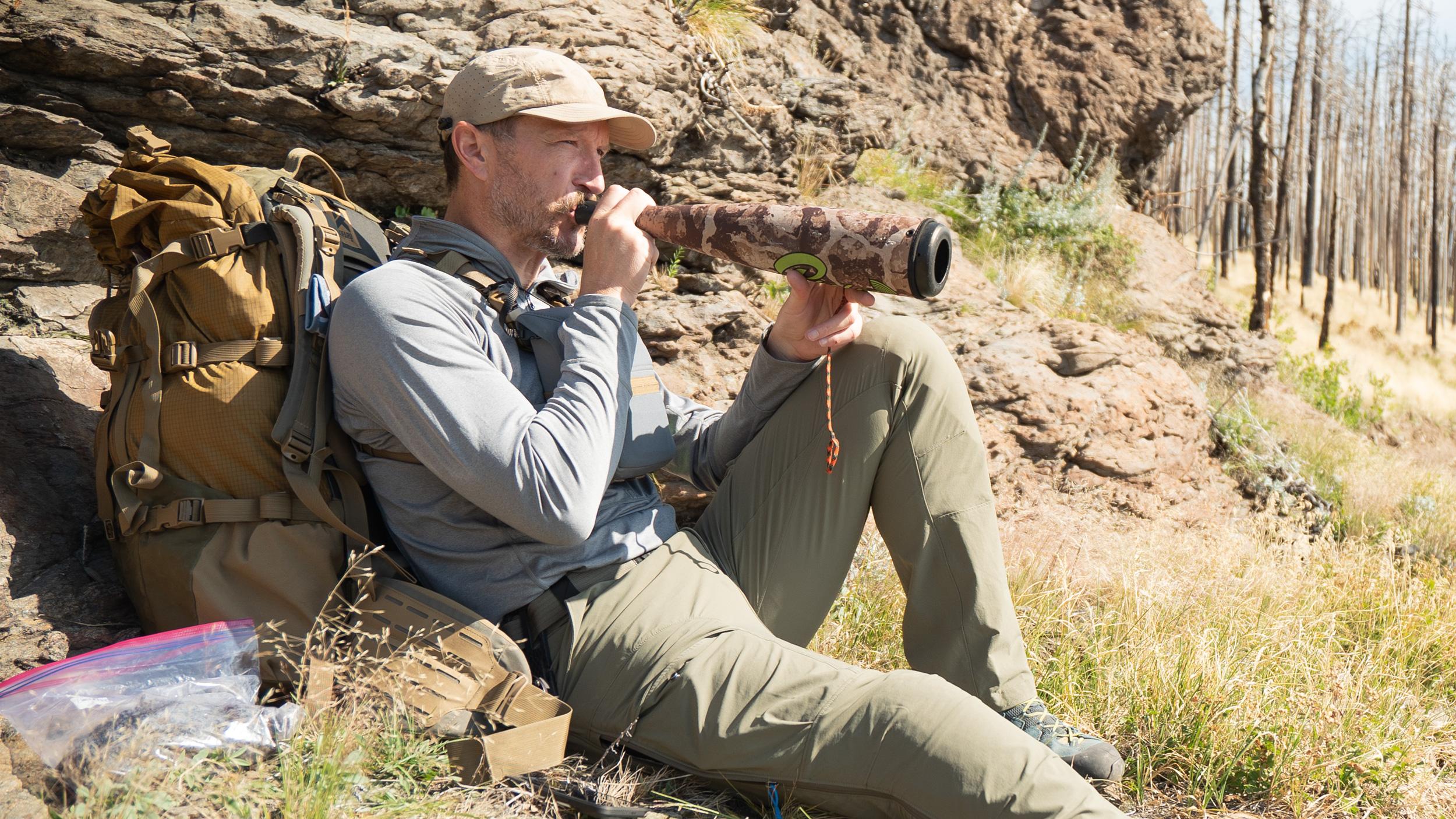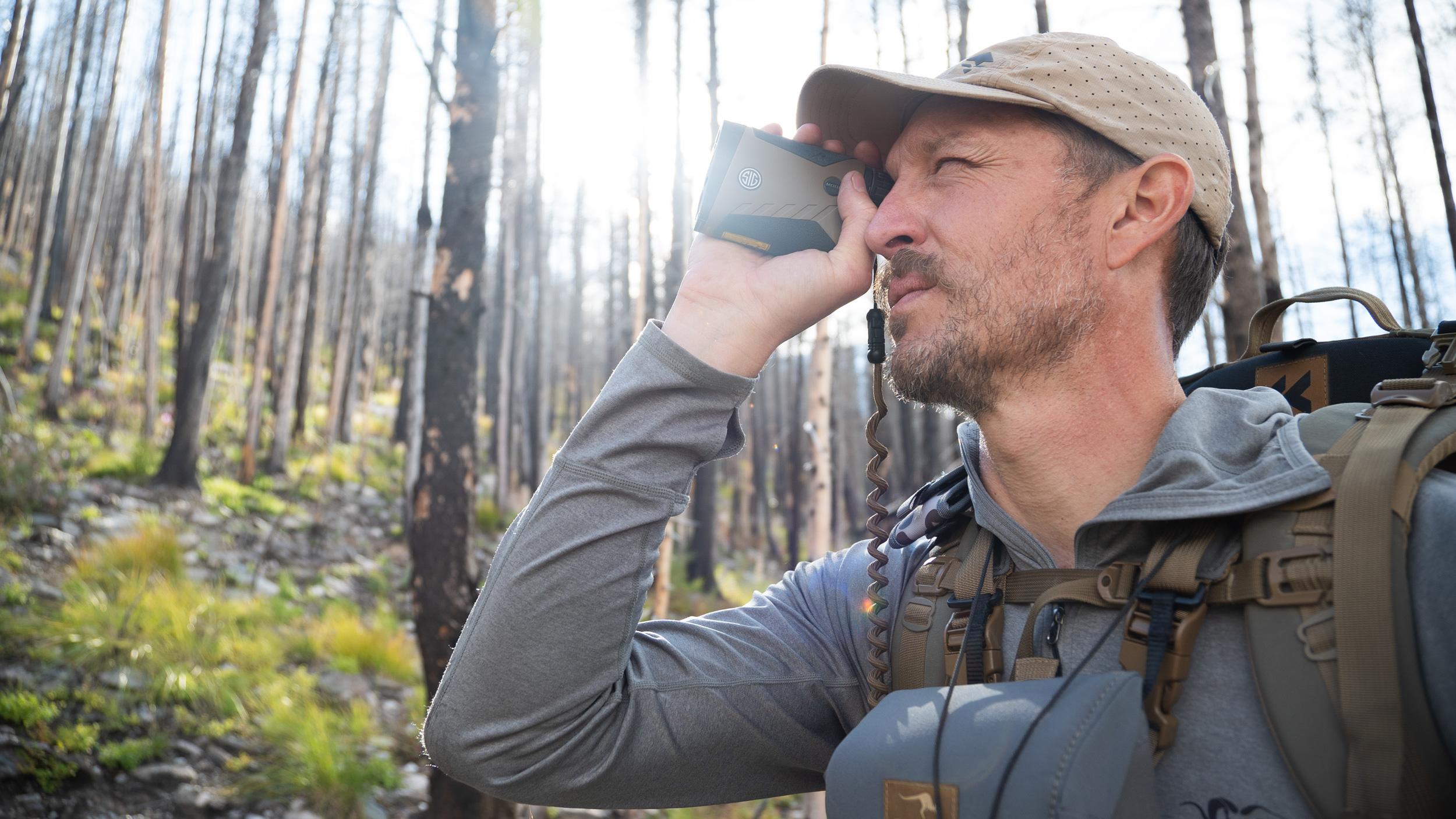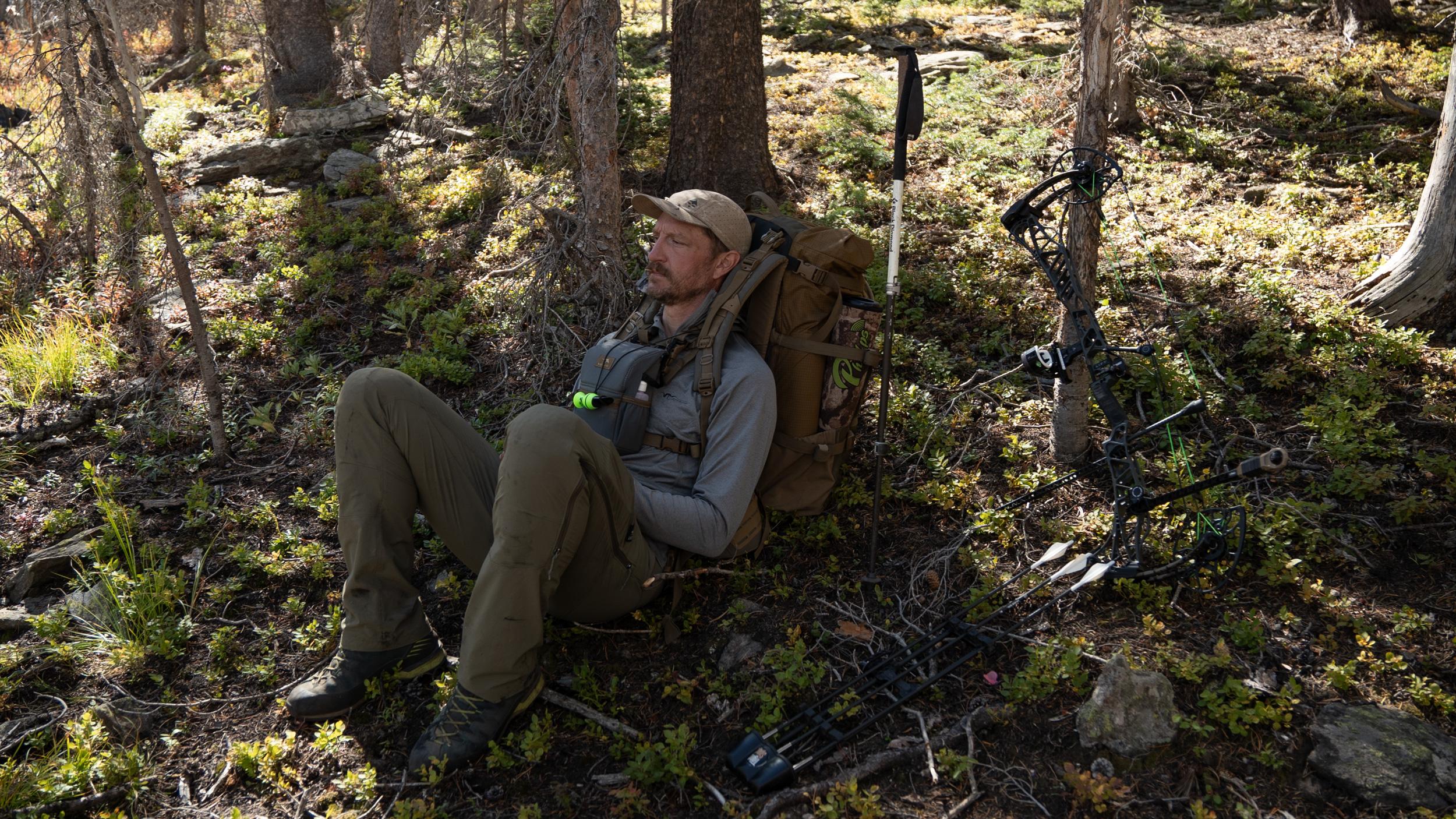







One of the most commonly asked questions we get is, “How do I find elk?” I recently wrote a more in-depth article about his topic, which you can find below.
In essence, elk need all three — food, water, bedding — daily (the triangle theorem). Additionally, they’ll seek refuge from hunting pressure. We’re all getting better at evaluating a map and using the available tools to find what looks like great elk habitat, but the next step of that process is to discern where elk are likely to be after there’s some hunting pressure. Consider the trailhead, the roads and motorized trails, and where those are in relation to the best-looking habitat. If the access points are on the tops of the ridges, the elk are probably going to push off into the canyon bottoms. If the access points are in the canyons, they’re likely to move up into the timberline pockets in higher elevations. If there are tons of access, where are the pockets or barriers to entry? Find those and you’ll find elk.
Another tip is to find the glassing points and allow your binoculars to do the walking before you commit to an area. If the area is extremely thick, you’ll have to utilize calling to locate a bull. In those cases, cover ground with your ears — whether that’s driving at night and bugling or walking and bugling from ridges into drainages or high points. Use what the area gives you to locate elk. Lastly, you can do all the map work you want — and I’m certainly not saying you shouldn’t — but once you’re on the landscape, be observant. Always consider what elk need and use that to predict where the benches, saddles, feeding, and bedding areas are. Don’t be afraid to move to find elk. It’s not uncommon for my plans A, B, C, and even D to not produce, and in those scenarios, it’s easy to talk yourself into giving up and going home. Elk are big animals. They move and use the landscape on a much grander scale than I often think. Don’t be afraid to pick a spot based on your assessments and go for it.
An elk’s first line of defense is its nose. They’re social animals, especially during the rut. A herd of elk will make both a lot of noise and movement as they move across a landscape. They’re used to hearing sticks popping and seeing other elk moving through the timber, but they have no tolerance for human scent. That’s not to say they won’t bust you if you're moving or if they hear your tromping through the timber, but always play the wind like your life depends on it. To that point, you have to anticipate the thermals and the prevailing winds. You have to be cognizant of what the wind does when cloud cover rolls in periodically. In the mornings, cooler air moves downhill. In the midmorning until late afternoon, the slope heats up, and the thermals will switch and begin rising uphill. Always think 30 to 60 minutes ahead so you’re in the right spot when the wind changes. Your plan of attack has to keep the thermals and wind in mind. If the elk are moving uphill in the morning as they normally do, you’ll almost always have to come towards them horizontally in some fashion or chase them from below. The same goes for evenings. If the air is still rising prior to it switching, you’ll have to come from above. Cloud cover will often cause unstable switching winds. If you’re in the middle of an approach, be aware of the cloud cover and plan accordingly. Overall, carry an ample amount of wind checker and use it incessantly. Be one step ahead, predict where they are likely going and what the wind/thermals will be doing in the areas they are moving toward.
Ideally, you’ll have a bull bugle without having to engage him at all until you’re in his bedroom; however, if you haven’t heard one, you’ll have to try to get a response from a good listening or glassing point. I’ll regularly test a cow call first to see if I can elicit a response. If I get a response from a cow call, I’m gauging the distance and location — and I’m probably going to stick with the cow call going forward, especially if he repeatedly sends out bugles as I sneak closer to the herd. If I don’t get a response with a cow call, I’ll utilize a locator bugle, which is a mid-volume, clean, three-note, four- to five-second bugle. I’ll wait for a response and listen intently. Once a bull answers, I’ll move to close the gap, making sure to be aware of the wind and thermals as I make my approach. The perfect scenario for me is that I don’t have to make another call until I am within about 100 yards. One common mistake elk hunters make is that they fall in love with hearing the bull respond to their calls as they make their way towards the herd. In those cases, I think bulls often either push their cows away from the approaching bull (hunter) or they’ll go silent because they don’t necessarily want the competition. It’s not always perfect, though, and in order to find the bull and close the distance as you go, you may have to use a locator call of some kind. My advice would be to call when necessary, but don’t overdo it. Get close first if you can.
When I get within that 100-yard zone, I often open with softer cow calls and listen to his response. I try not to rush. I try to remain patient and read his temperament. He may amplify with some aggressive bugles — almost as if he’s demanding that the cow come to him. In those situations, I’ll add longer, whiny, cow elk calls and listen. He may also sound as if he’s happy with his harem and not escalate with bugling or he may even begin to move away. At that point, I like to test him by adding a bugle, and I try to match his temperament. I may try to heighten the situation and add a chuckle or a more aggressive bull calling cow bugle. If he bugles aggressively back, I’ll cut him off mid-bugle with my own excited bugles and chuckles. There’s a lot of emotion conveyed in a bulls bugle. Try to read it and match it.
I don’t know that there’s an exact playbook for calling in bulls. I think where the magic lies is in being able to listen and respond with what that bull, on that day, is most interested in. Be adaptable and don’t give up. I’ve often trailed bulls for miles in the morning, getting within a 100 yards only to have them walk off, seemingly leaving me in their dust. Eventually, the herd will slow up as they approach their desired bedding area, and I have called bulls back in and killed them. Sometimes it’s been in response to what they believe is a trailing cow, or sometimes an annoying satellite bull that just won’t leave. The key is to listen, be adaptable, give them what they need, and don’t give up!
Finding elk is hard. Getting into close proximity is very difficult. And making the shot actually count can seem next to impossible. One of — if not the biggest — reasons why I’ve missed shots is due to miscalculations in the range and not picking my shooting lanes. Additionally, in my experience, it’s been rare when a bull has naturally paused in a shooting lane and allowed me to draw and execute a shot. Mostly, I’ve had to recognize the travel route the bull is likely to take, then be observant and assess the situation as it develops to know when I can draw my bow without being detected. Then, I’ve had to stop them with a chirp or cow call when they are in a good spot to execute a shot. Prior to that entire scene playing out, I would have ideally ranged several trees, rocks or brush to gauge those distances and made a mental note of them. The last thing you want to be thinking about when the bull is moving into a shooting lane is whether you should move your sight or, worse, have no idea what the range is. Commonly, I see hunters not pre-range, not know when to draw (drawing too early, drawing when they are in the open and get detected), or they don’t stop the bull in their desired shooting lane. It’s very common for us to get overwhelmed with adrenaline and either draw too early or stop the bull too early. You have to be able to do all three steps to be successful in most cases. So, practice ranging without a rangefinder prior to your hunt. Pre-range objects in advance of a calling scenario, draw your bow when you can do so without being seen, and finally, stop the bull when he’s in your shooting lane. After that, take your time, trust the process, and execute a perfect shot.
Archery elk hunting is a marathon. It’s not a sprint. I’ve killed a few bulls on day two or three, but most hunts have required seven to 10 days for an opportunity. I’ve also had hunts where I was within range of a bull almost every day, but, as I alluded to above, everything has to go just right to finally line up for the perfect arrow to be released. Every elk hunt I’ve ever done has been a grind, and at some point, I've had the thought that killing an elk with a bow and arrow is impossible. Expect it to be hard because it is, but guess what? It’s not impossible, and in a matter of moments, it can go from the worst hunt to the most memorable moment of your life. Keep thinking, planning, and moving. Stay positive and don’t treat slow periods as dead time. Every step, every new drainage or ridge could be the one that puts you in bow range of a bugling bull. When you need to, take naps, go to town and get some pizza, talk to your friends and family if you need the support, but stay in the game as much as possible.
I often think when I’m hunting that in just a few short days I’ll be back behind my computer, going about my daily routine, but today… today, I’m elk hunting, and I’m going to hunt like it’s the rare opportunity that it is.